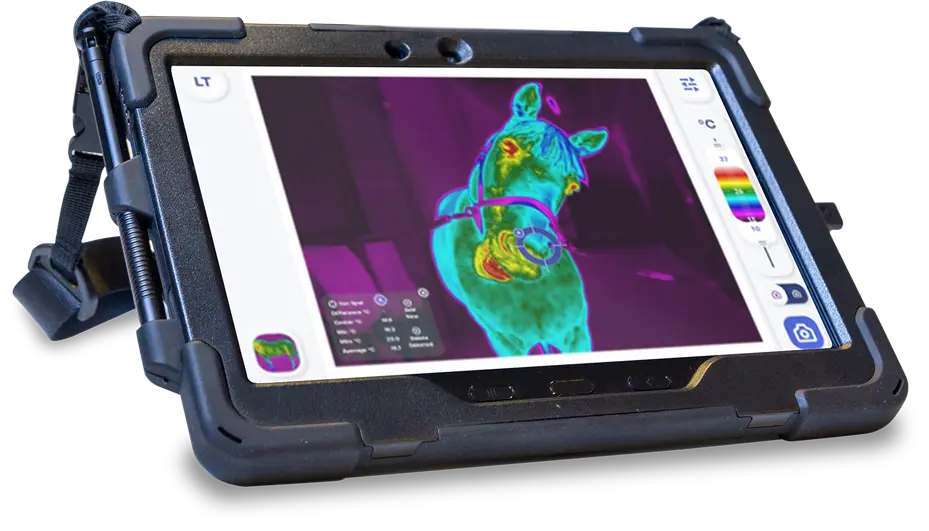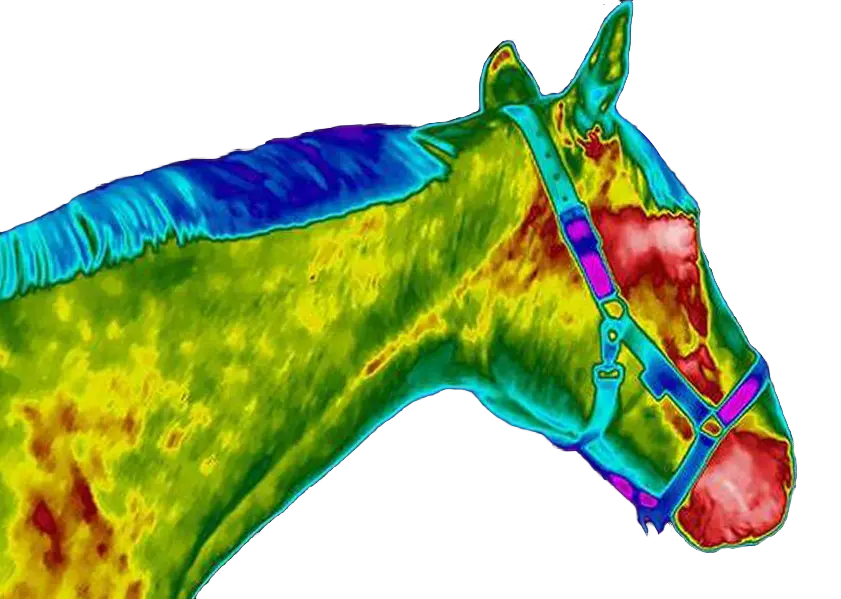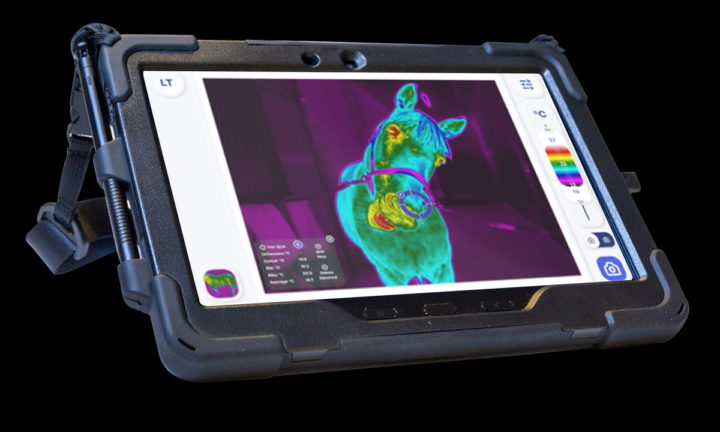Case example Hindfoot osteoarthritis Initial state In August, the horse was diagnosed with hindlimb osteoarthritis, which was treated with injections...
Lue lisää »Equine thermography is a non-invasive and painless way to assess a horse’s health. It can be used to identify problems that may not be visible to the naked eye, such as lameness, muscle soreness, or inflammation in the horse’s joints.
Thermal imaging can help to identify the source of pain and discomfort in a horse, which can aid in the development of a treatment plan.
It can be used to monitor the effectiveness of treatments, such as physiotherapy or medications, by allowing the veterinarian to see how the horse’s body is responding to the treatment.

Detect the location and extent of early lesions before they are clinically evident
Thermography can be used to comprehensively examine animals in pain as well as rescue animals, since the animal is not touched during the examination
Localising problem areas for further examinations and appropriate treatment
Track and objectively monitor the effectiveness of treatment and the recovery progress during rehabilitation
Thermography is an animal-friendly diagnostic tool, since it is not based on identifying pain reaction
Intuitive visual images aid in client communication and ease of understanding, and justifies your customer’s investment in IR imaging


Case example Hindfoot osteoarthritis Initial state In August, the horse was diagnosed with hindlimb osteoarthritis, which was treated with injections...
Lue lisää »Case example SI problem and too narrow saddle Initial state The horse is a professionally ridden school horse that competes...
Lue lisää »Case example Inflammation in a horse’s mouth Initial state Horses tend to mask their pain and some injuries may go...
Lue lisää »Case example SI joint dysfunction Determining the exact diagnosis of Si joint dysfunction is difficult, due to the often mild...
Lue lisää »A pony stopped eating with no obvious cause. The owner has no clue as the pony was recently purchased and...
Lue lisää »A thermal imaging finding on a trotter in the hoof of the right front leg after a hit-out. In an...
Lue lisää »

Thermidas VET
Polttimonkatu 4
33210 Tampere, Finland